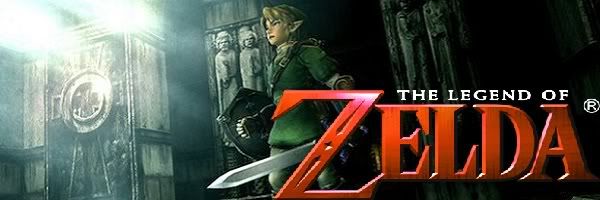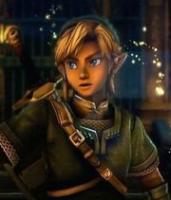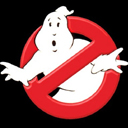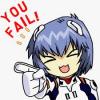Understanding graphics (101)
#1
 Guest_TRON_*
Guest_TRON_*
Posted 15 July 2012 - 03:19 AM
dept-of field-
tesselation-
shaders-
- Crackkat likes this
#2

Posted 15 July 2012 - 03:50 AM
Tesselation - A tech for getting more detail on models
Shaders - Programs which makes an object look like something. Like a material.
- Crackkat and HaoSenVastForest like this

#3
 Guest_TRON_*
Guest_TRON_*
Posted 15 July 2012 - 03:57 AM
#4

Posted 15 July 2012 - 04:59 AM
depth of field - A camera effects that occurs on cameras when they focus on a single object, the fore and background gets blurry.
Tesselation - A tech for getting more detail on models
Shaders - Programs which makes an object look like something. Like a material.
thanks for the help
1) what's the difference between a shader and a texture
2) what kind of detail do you mean when you talk about tesselation

#5

Posted 15 July 2012 - 05:02 AM
Example:
Before: After:

AA takes a lot of system power. That is why many games doesn't have that much or none AA.
thanks for the help
couple of questions though
1) what's the difference between a shader and a texture
2) what kind of detail do you mean when you talk about tesselation
1. You use a texture inside of a shader. For example, a metal shader would use metal textures.
2. As you may know, 3d models are made of polygons. Tesselation adds more details. Like scratches on faces and stuff.
Edited by Hinkik, 15 July 2012 - 05:03 AM.
- Crackkat likes this

#6

Posted 15 July 2012 - 06:06 AM
#7

Posted 15 July 2012 - 06:15 AM
#8

Posted 15 July 2012 - 06:20 AM
#9

Posted 15 July 2012 - 12:30 PM
dept-of field-
3d?
tesselation-
making textures appear bumpier and more "natural" throught random algorithms.
shaders-
making everything appear more "natural" by having them shaded more closer to how they would be by a natural environment.
Is that what you meant?
Warning: Cannot modify header information - headers already sent by (output started at /home/thewiiu/public_html/ips_kernel/HTMLPurifier/HTMLPurifier/DefinitionCache/Serializer.php:133) in /home/thewiiu/public_html/ips_kernel/classAjax.php on line 328
{"success":1,"post":"\n\n
\n\t\t<\/a>\n\t\t\n\t\n\t\t\n\t\t
\n\t\t\t\n\t\t\t\t
#10

Posted 15 July 2012 - 02:12 PM
Actually Tesselation is when the system takes a polygon from a model and the system calculates smaller polygons that fit inside the models polygon. This gives a much smoother looking model
That was basically what I said. But I said it in a more non tech friendly way.
And you don't use it for smoothness that much, it's more for details. I would say phong shaders is more for smoothness.
It's kinda like displacement and normal maps. Not that much like a bump map though, just a little.
Edited by Hinkik, 16 July 2012 - 06:11 AM.

#12

Posted 16 July 2012 - 06:11 AM
This may not be the right place to put this but does anyone know the difference between a CPU and a GPU?
CPU: Stands for central processing unit. Calculates general stuff. Example in games are AI, general game program... etc.
GPU: Stands for Graphics Processing unit. Calculates the output for the screen. Basically visuals and graphics.

#13

Posted 16 July 2012 - 09:02 AM

Never argue with an idiot, they drag you down to their level and then beat you with experience.
#14

Posted 07 January 2014 - 11:20 PM
We should totally start this thread up again (even if Nollog is the only person in th thread who is still active) cause I know most of the graphic convos that go on around here shoot straight over my head to infinity and beyond...
WAR IS PEACE
FREEDOM IS SLAVERY
IGNORANCE IS STRENGTH
LISTEN AND BELIEVE
#15

Posted 08 January 2014 - 06:50 AM
Tesselation is the subdivision of a polygons surfcace. Draw three dots, connect the dots to make a triangle. You have a polygon. Now put a dot in that triangle, and draw lines to the new dot to make triangles inside the original triangle. Congratulations, you just tesselated.
Shaders, this one is confusing because of the rapid change in graphics technology over the last few years. Shades were originally a program that blended colors of a pixel lighter or darker, thus 'shading' it. These were combined with 'maps' to show how much to shade, where. The where was determined by the pixel on the map, which was like a co-ordinate, and how much had to do with the color of the pixel on the map.
The first bump maps, were simplistic bump maps, which only had a value for height. They were monochrome, usually black and white (the actual color is irrelevent) the shades were visual representations of numbers. Grey was nuetral, and grey pixels would have a value of 0. These would recieve no special blending. Each shade lighter than 0 added a number, lighter grey was 1, pure white was say 10, each shade was blended with varying shades of white according to the number it represented. This showed the 'high' points of the texture, that would catch the light. The same was done with shades lower than grey, darker grey was -1, and black say -10. Each color inbetween was a similar step, and blended with varying intesities of black, these would darken the areas supposed to be lower and in shadow.
Normal maps are... to put it crudely the same thing... But times 3. You have the height map, a left facing map, and a right facing map. each one a different color, with the shade of that color correlating to a number as before. They would be put one atop the other, as to blend the colors. now all 3 colors were used. R7,G-3,B5 = Right 7 Left-3 Height 5.
The reason you now had left and right added in with their own colors, is that light doesnt just bounce off objects in a single perpindicular direction. It bounces and scatters depending on the direction the light travels after hittingbthe surface from a certain direction, called the normal. The added dimensions of left and right simulate the light bouncing more realistically, as it can now acount for every angle.
This technology was done a long, LONG time ago, but couldnt be rendered in real time.
Since then, Video graphics arrays have been beefed up so much they became graphics processor units, now they could start doing these effects conceived in the 70's in real time. They eventually added hardware specifically for shading those pixels. These were simple arithmitic units that worked massively in paralell to shade those pixels. These came to be called shaders.
Well, it turned out shading werent the only things these streaming processing units were good at. So they began being used and designed for a wider variety of tasks, but the shader nickname tagged along, which is why you have confusing terms like 'geometry shader' and'compute shader'.
- BrosBeforeGardenTools and KeptMyWiiUAndLeftTheForums like this

#16

Posted 08 January 2014 - 01:51 PM
this is a great thread. i don't understand the mumbo jumbo associated with graphics. i just LIKE GOOD ONEZ!!1
- KeptMyWiiUAndLeftTheForums likes this
1 user(s) are reading this topic
0 members, 1 guests, 0 anonymous users






















